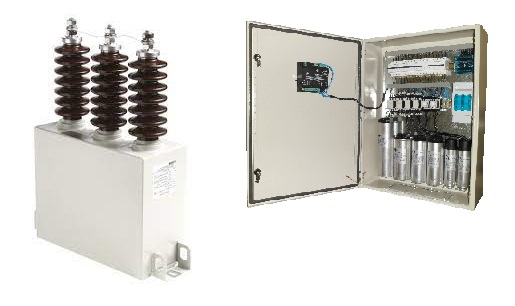What is a Capacitor Bank?
A capacitor bank is a group of capacitors connected together in a specific configuration, typically in parallel or in series. Capacitor banks are commonly used in electrical power systems to improve the power factor and to provide reactive power compensation.

In a power system, the power factor is the ratio of the real power (measured in watts) to the apparent power (measured in volt-amperes). The power factor is typically less than 1, which means that there is a difference between the real power and the apparent power. This difference is due to the presence of reactive power, which is the power that is stored in the form of an electric or magnetic field.
Reactive power is necessary for many electrical systems, as it is required to power motors, generators, and other equipment. However, it can also cause problems, such as increased losses in the transmission and distribution system, and reduced capacity on the power lines.
A capacitor bank can help to improve the power factor by providing reactive power compensation. By connecting capacitors in parallel or in series with the load, it is possible to store and release reactive power as needed, which can help to improve the overall power factor of the system. They are typically connected to the power system through a switchgear or a power electronic converter, and they are controlled by a dedicated controller or power management system.
Applications of Capacitor Banks
Capacitor banks are commonly used in a variety of applications, such as in power distribution systems, industrial facilities, and renewable energy systems.
- Power factor correction: Capacitor banks are used to improve the power factor of an electrical system by supplying reactive power, which compensates for the reactive power consumed by inductive loads. This reduces losses and increases the efficiency of the system.
- Voltage regulation: Capacitor banks can be used to smooth out voltage fluctuations and regulate the voltage at a certain level, which is important for maintaining the stability of the electrical system.
- Harmonic filtering: Capacitor banks can be used to filter out harmonic currents and reduce the negative effects of harmonic distortion on the electrical system.
- Motor starting: Capacitor banks can be used to provide the initial starting current for motors, which reduces the size of the cables and other electrical components required for starting.
We have to pay hugely for power supply companies as damaraj, we need to stop it buy using KVAR ,CAPACITOR BANKS,
WE NEED to know how to go it,